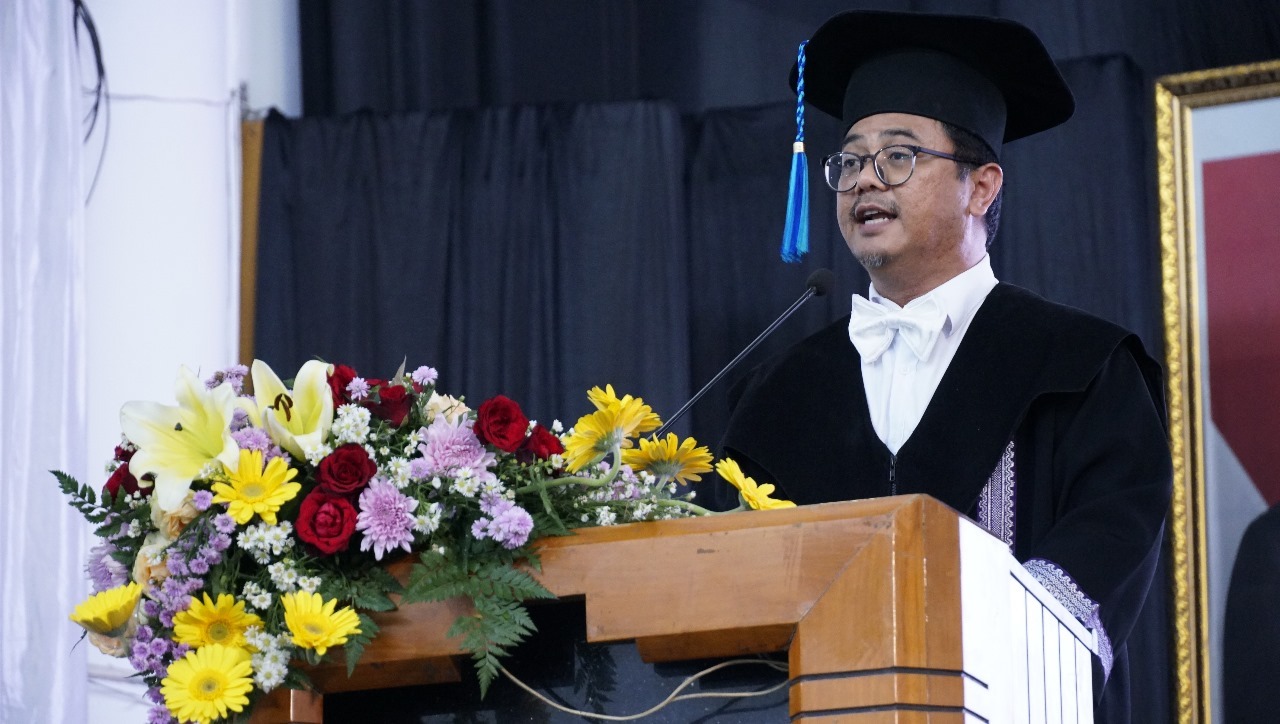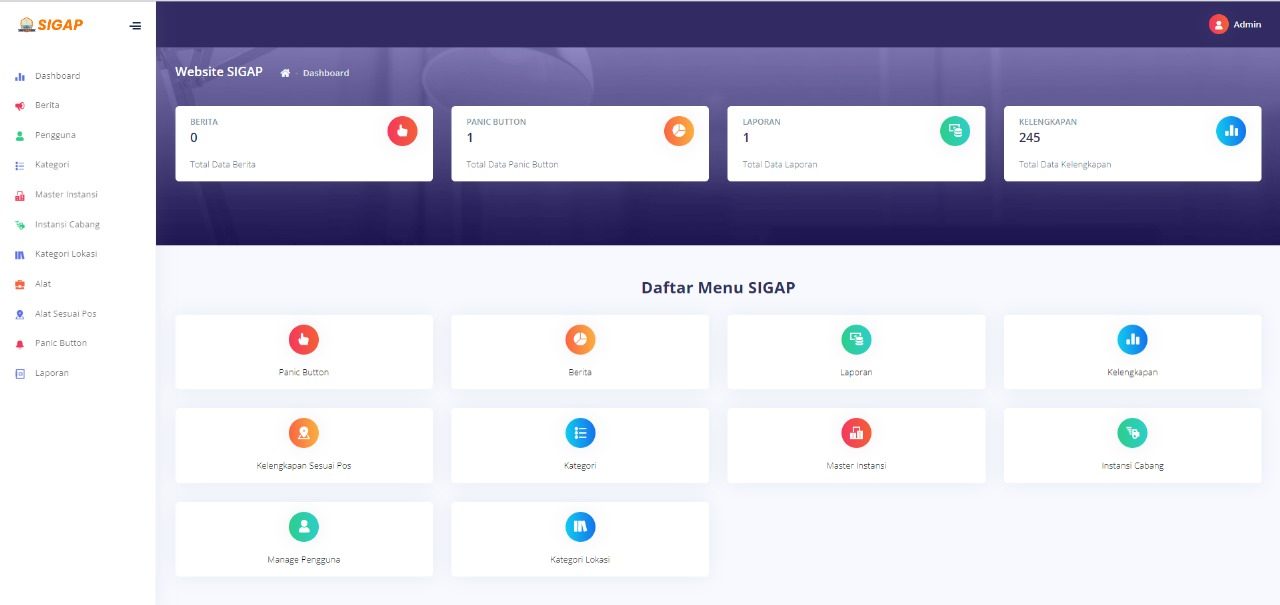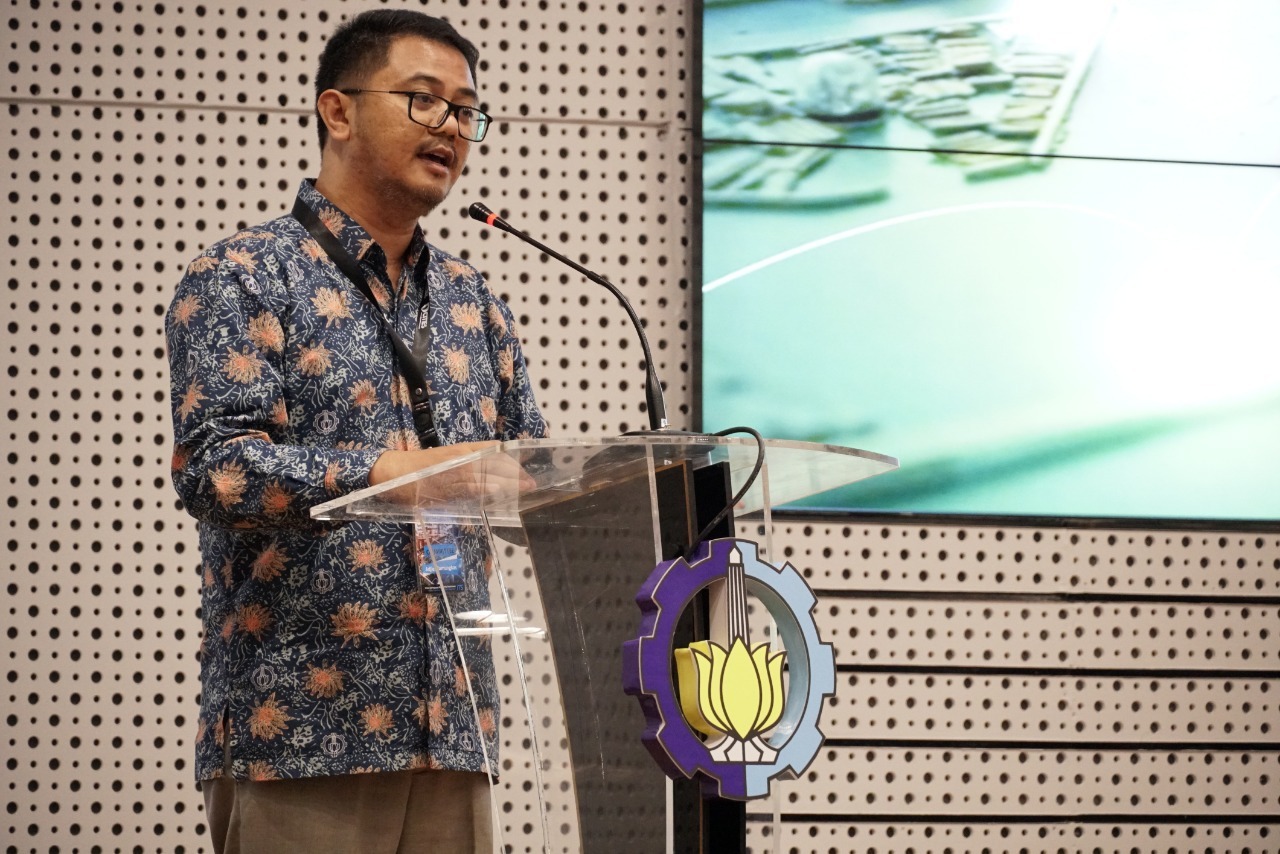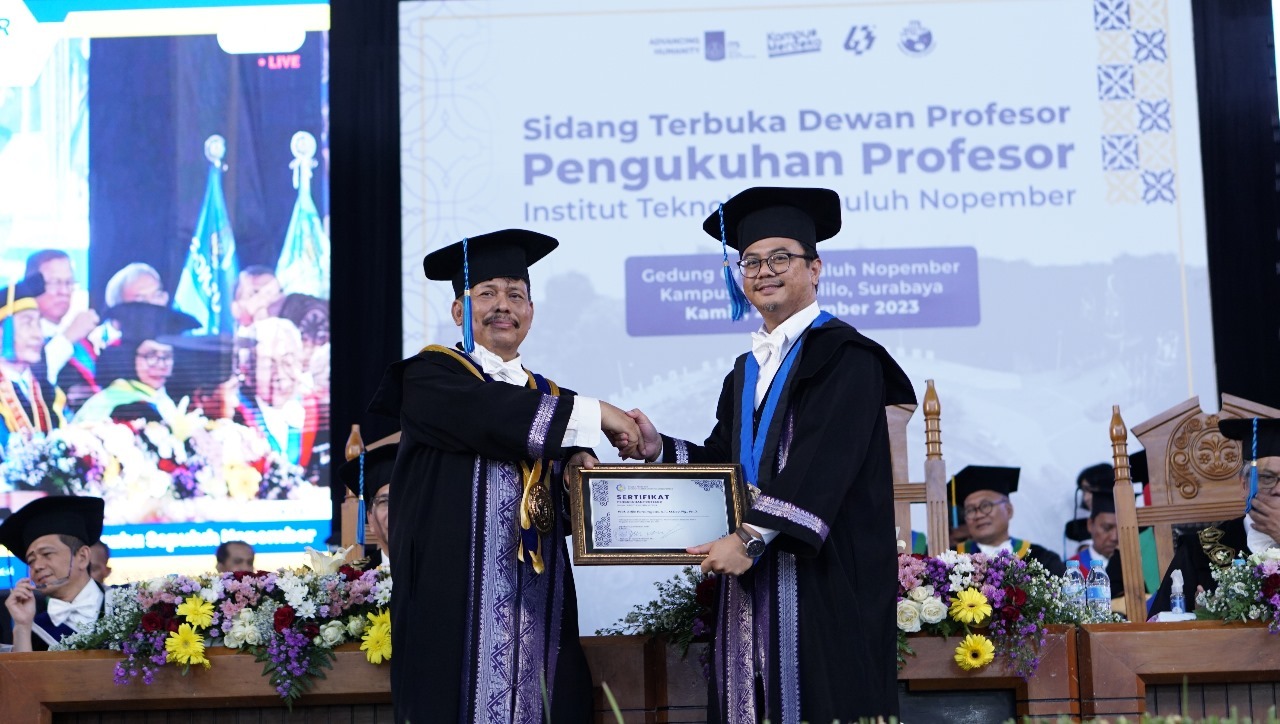PWK ITS First Professor Creates Risk-Based Planning Model

ITS Campus, ITS News – City readiness in the face of disaster is one of the key factors determining the sustainability of a city. Therefore, the 189th Professor of the institut Teknologi Sepuluh Nopember (ITS) Prof. Adjie Pamungkas ST MDev Plg PhD came up with a risk-based planning model in building city resilience to disasters.
The first professor from the Department of Urban and Regional Planning (PWK) ITS said this idea emerged after the tsunami disaster hit Aceh in 2004. One of the biggest disasters in Indonesia made him realize that disaster parameters are still ignored in the regional and urban planning process. “In fact, the impact not only disrupts comfort, but also a sense of security,” Adjie reminded.
In applying the risk-based planning model, according to Adjie, the first step is to add specific disaster elements to each part of the spatial plan material. Among these elements are the use of comprehensive disaster data and analysis, the determination of pro-urban resilience policies, and the provision of risk reduction infrastructure and emergency infrastructure.

Website interface of the Earthquake Emergency Information System (SIGAP) to support emergency infrastructure so that it becomes more effective and efficient.
A graduate of the University of Queensland, Australia, this is one example of a pro-urban resilience policy. This can take the form of regulations regarding supporting utilities for complex buildings to help simple buildings get through emergencies. “The implementation can be by increasing the volume of water reserves in hotel buildings, so that it can be utilized by the surrounding community during emergencies,” he said.
Furthermore, the risk reduction infrastructure and emergency infrastructure that Adjie has successfully developed is the Earthquake Emergency Information System (SIGAP). This site can detect the source of emergency infrastructure, monitor its condition, availability, and the process of moving from the provider source to disaster victims. “Thus, the emergency infrastructure provision process becomes more effective and efficient,” he added.

ITS’ 189th professor Prof. Adjie Pamungkas ST MDev Plg PhD opens an international event.
After planning a city with good risk-based systems and planning, the next step is to prepare community resilience in the face of disasters. Community understanding of disasters can be improved through training to increase knowledge and skills in disaster management. In this case, the government is obliged to prioritize vulnerable groups during a disaster, one of which is people with disabilities.
Departing from this idea, the ITS Disaster Mitigation and Climate Change Research Center (Puslit MKPI) conducted an earthquake evaluation simulation using an inclusive evacuation route at the Blind Children’s Education Foundation (YPAB) in Keputih, Surabaya. The Puslit MKPI ITS team project, which is under the leadership of Adjie, also presents the Evacuation Raba Berbicara (Evari) map to facilitate learning of earthquake evacuation for people with visual disabilities through a table top exercise.

Prof. Adjie Pamungkas ST MDev Plg PhD (right) when inaugurated as the 189th ITS Professor.
Finally, the former Head of the ITS Urban and Regional Planning Department expressed his hopes in his scientific oration which was read during his inauguration as a professor at ITS. As an academic and practitioner in the field of planning, the results of research that has been carried out must be transformed into policies, regulations, and practices that apply in the field. “Thus, cities in Indonesia will have resilience and sustainability,” he concluded. (ITS PR)
Reporter: Nurul Lathifah
Translator: Niza Hakimatussayyidah Zaini Ramadhan
Related News
-
Carrying New Innovation, ITS Robotic Team Ready to Carve Out International Achievements
ITS Campus, ITS News —Back with their newest innovations, the Banyubramanta and Bayucaraka robot teams from Institut Teknologi Sepuluh
January 21, 2024 16:01 -
ITS New Doctor Innovates Self-Supervised Learning for 3D Data
ITS Campus, ITS News — A graduate of the Electrical Engineering Department of Institut Teknologi Sepuluh Nopember (ITS), Dr
January 21, 2024 16:01 -
ITS Professor Successfully Blends Biomass and Plastic into Biofuel
ITS Campus, ITS News — The increasing amount of plastic used in society creates its own environmental problems. To
January 21, 2024 16:01 -
English Check, English Learning Platform Innovated by ITS Students
ITS Campus, ITS News —The students of Institut Teknologi Sepuluh Nopember (ITS) continue to present innovations in the field
January 21, 2024 16:01
